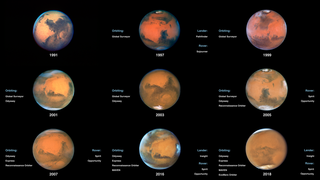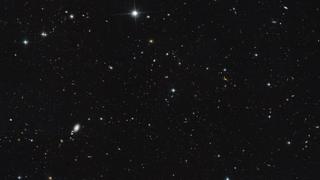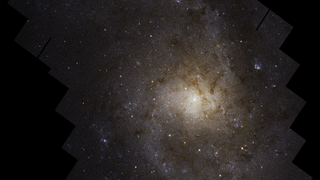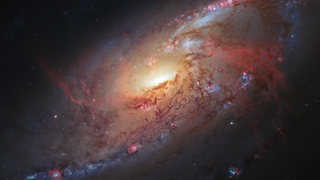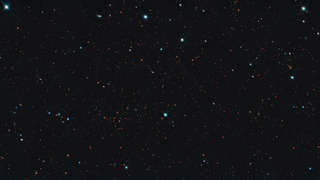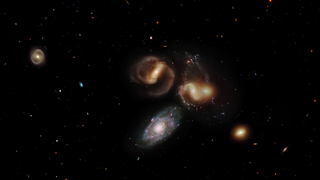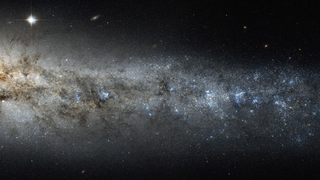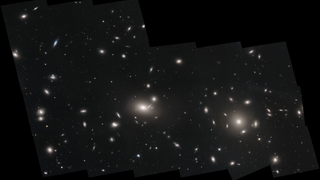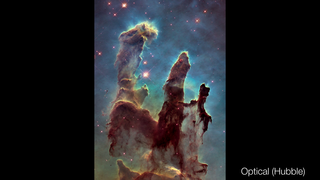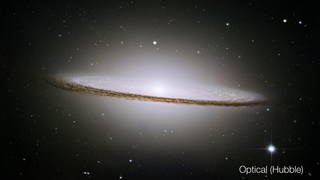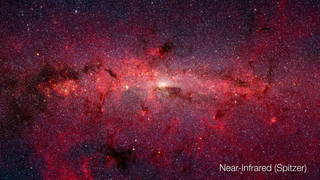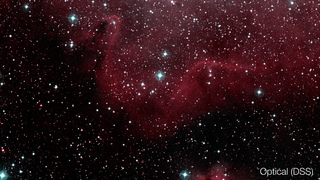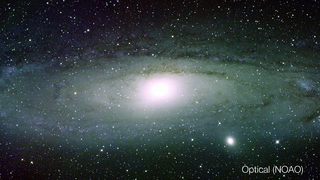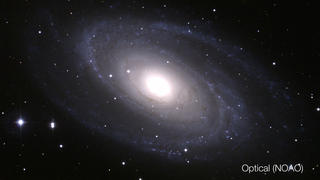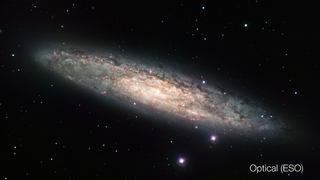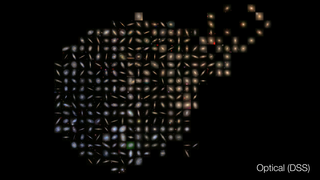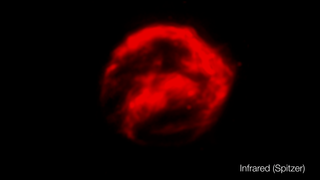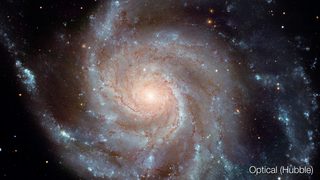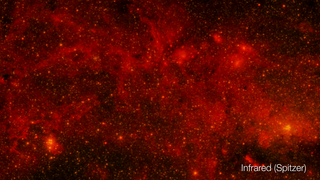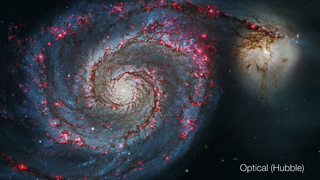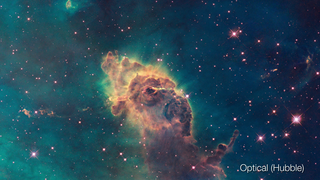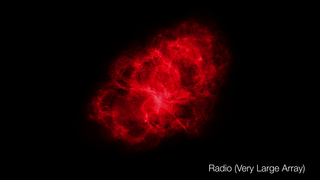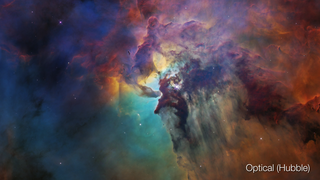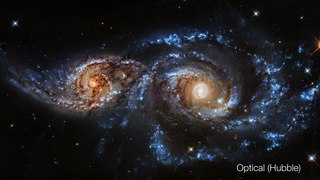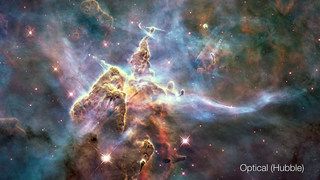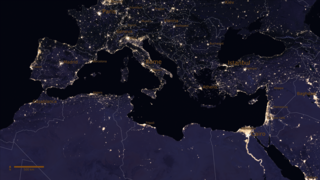Universe
ID: 30967
30 Doradus (the Tarantula Nebula) is a very bright and active star-forming region outside of the Milky Way galaxy, at 160,000 light-years away. “30 Dor” is home to the central star cluster NGC 2070, including the most active region, R136, which appears in the central-right area of the image. R136 is a few million years old and contains many thousands of young stars, including several of the largest known. The visible (Hubble) bright blue stars shine out of the cleared cavity that is excavated by stellar winds. The redder stars are still partially embedded in the cloud material, seen in shadow except where illuminated by the cavity stars. In the infrared (Hubble) view the embedded stars shine more clearly through the intervening cloud material.
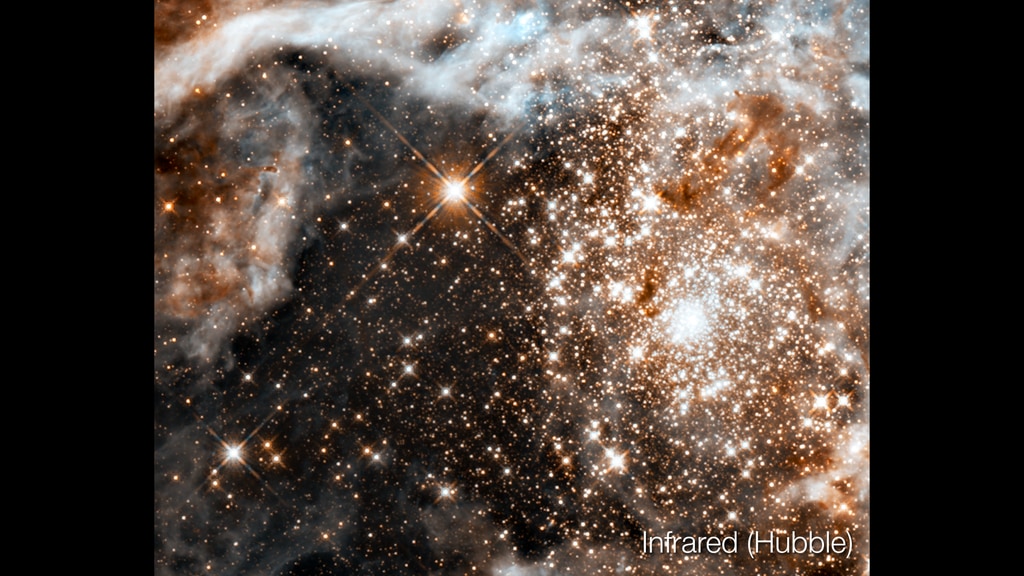
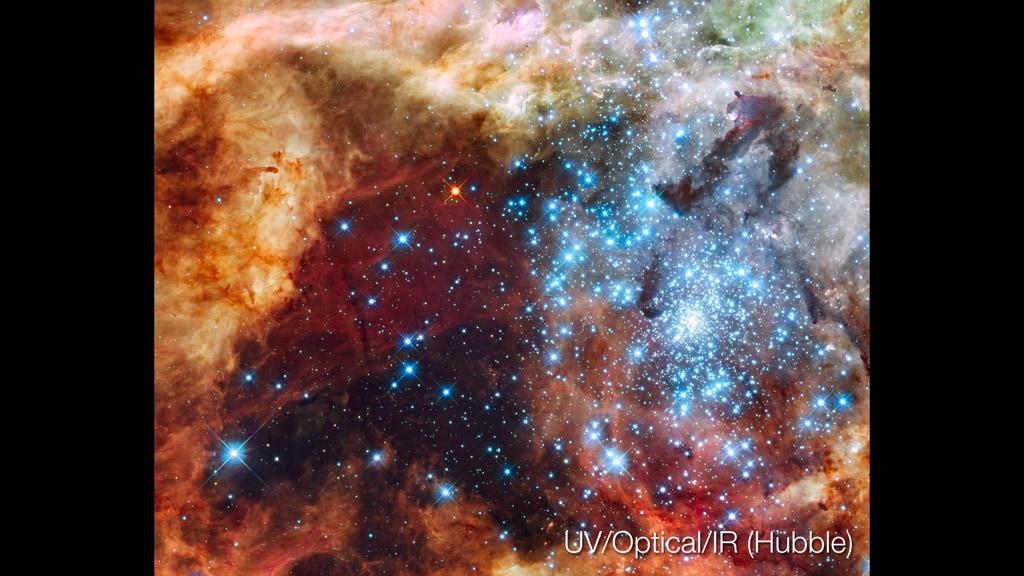
30 Doradus: A Massive Star-Forming Region


Related
Credits
Greg Bacon (STScI): Visualizer
Francesco Paresce (INAF OAS Bologna): Image Processing
Robert O'Connell (University of Virginia): Image Processing
Leann Johnson (Global Science and Technology, Inc.): Technical Support
Francesco Paresce (INAF OAS Bologna): Image Processing
Robert O'Connell (University of Virginia): Image Processing
Leann Johnson (Global Science and Technology, Inc.): Technical Support
Please give credit for this item to:
Video: NASA, ESA, and G. Bacon (STScI)
Images: NASA, ESA, F. Paresce (INAF-IASF, Bologna, Italy), R. O'Connell (University of Virginia, Charlottesville), and the Wide Field Camera 3 Science Oversight Committee
Video: NASA, ESA, and G. Bacon (STScI)
Images: NASA, ESA, F. Paresce (INAF-IASF, Bologna, Italy), R. O'Connell (University of Virginia, Charlottesville), and the Wide Field Camera 3 Science Oversight Committee
Short URL to share this page:
https://svs.gsfc.nasa.gov/30967
Mission:
Hubble
Data Used:
Note: While we identify the data sets used in these visualizations, we do not store any further details nor the data sets themselves on our site.
Keywords:
SVS >> Galaxy
SVS >> HDTV
SVS >> Milky Way
SVS >> Stellar Wind
SVS >> Hyperwall
SVS >> Star
NASA Science >> Universe
https://svs.gsfc.nasa.gov/30967
Mission:
Hubble
Data Used:
Hubble Space Telescope
Observed DataHubble Space Telescope/Wide Field Camera 3 also referred to as: WFC3
Observed DataKeywords:
SVS >> Galaxy
SVS >> HDTV
SVS >> Milky Way
SVS >> Stellar Wind
SVS >> Hyperwall
SVS >> Star
NASA Science >> Universe
